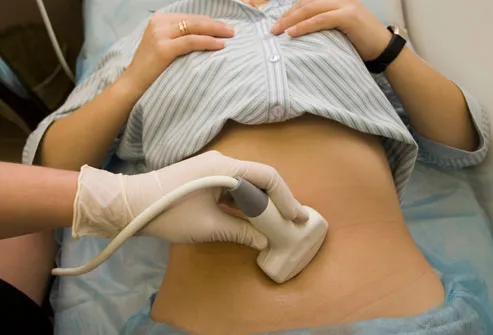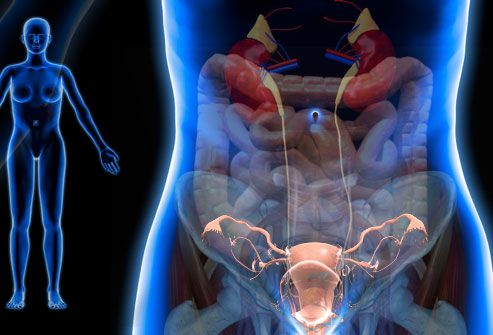 WWW.HEALTHYBARN.COM
WWW.HEALTHYBARN.COM
Medical Treatment
- Entrance pain may be treated when the cause is identified.
- Atrophy (thinning of the vaginal walls): Entrance pain caused by atrophy is common among postmenopausal women who do not take hormone replacement medication. Blood flow and lubrication respond directly to hormone replacement. The most rapid relief of atrophy comes from applying topical estrogen vaginal cream directly to the vagina and its opening. This cream is available by prescription only.
- Urethritis and urethral syndrome: With this condition, a woman may urinate frequently with urgency, pain, and difficulty, but a urinalysis can find no identifiable bacteria. These symptoms may be caused by chronic inflammation of the urethra (the tube through which urine exits the body) from muscle spasms, anxiety, low estrogen levels, or a combination of these causes. Using a special instrument, the doctor may dilate the urethra. The doctor may prescribe low-dose antibiotics. At times, antidepressants and antispasmodics may also be prescribed.
- Inadequate lubrication: Treatment of inadequate lubrication depends on the cause. Options include water-soluble lubricants (for use with condoms; other types of lubricants may damage condoms) or other substances such as vegetable oils. If arousal does not take place, more extensive foreplay might be needed during sexual relations.
- Vaginismus: Painful spasms of muscles at the opening of the vagina may be an involuntary but appropriate response to painful stimuli. These spasms may be due to several factors, including painful insertion, previous painful experiences, previous abuse, or an unresolved conflict regarding sexuality. For a woman with vaginismus, her doctor may recommend behavioral therapy, including vaginal relaxation exercises.
- Vaginal strictures (abnormal narrowing): Doctors commonly see vaginal strictures after pelvic surgery, radiation, or menopause. Estrogen, or special surgical techniques may be used to treat these strictures.
- Interstitial cystitis: This chronic inflammation of the bladder has no known cause; however, pain with intercourse is a common symptom. A health care provider may perform a cystoscopy (a procedure to look inside the bladder), or a urologist may distend (stretch) the bladder to examine the bladder wall. These procedures often work to clear the condition. Other treatments includeamitriptyline, nifedipine, Elmiron, or other prescription drugs. Other options include bladder washings with dimethyl sulfoxide (DMSO) or other agents or transcutaneous electric stimulation (TENS) and acupuncture. Surgery is a last resort.
- Endometriosis: Endometriosis occurs when the lining of the uterus is found outside the uterus. Pain during intercourse caused by endometriosis is not uncommon. Relief of this pain often indicates success in treating endometriosis.
- Vulvovaginitis (inflammation of the vulva and vagina): Whether recurrent or chronic, this problem is common despite the rise in the number of over-the-counter treatments.
- If not responsive to self-treatment with lubricating gels or initial treatment by a doctor, a woman may need a more thorough evaluation to identify the cause.
- A doctor may ask the woman if she uses antibiotic or antifungal medication or if she douches. If so, these practices should be stopped to help determine whether a specific disease-causing organism is present.
- Treatment is based on the presence of bacteria or other organisms. Often, no single organism is identified. The doctor may talk to the woman about proper hygiene.
- If recurring symptoms are shared with a sexual partner, both individuals should be tested for sexually transmitted diseases (STDs).
- A doctor considers the possibility of intermittent urethral infection withchlamydia, an STD, as well as a more obvious urinary tract infection, and then treats with the appropriate antibiotics.

- Treatment for deep thrust pain includes two strategies.
- Pelvic adhesions (tissue that has become stuck together, sometimes developing after surgery): Pain with intercourse caused by pelvic adhesions can be relieved by removing the adhesions.
- Uterine retroversion: The health care provider may find physical causes of the pain, including ovarian cysts, pelvic inflammatory disease , endometriosis (mucous tissue out of place), or retroversion of the uterus (uterus is tilted backward instead of forward).
 Home Remedies for Painful IntercourseApplying lubricating gels to the outer sexual organs, including the vulva and labia, and in the vagina may be helpful to women and ease pain during intercourse. Sex toys, such as vibrators, may also be useful. A woman should talk with her health care provider before attempting to use a vaginal dilator.
Home Remedies for Painful IntercourseApplying lubricating gels to the outer sexual organs, including the vulva and labia, and in the vagina may be helpful to women and ease pain during intercourse. Sex toys, such as vibrators, may also be useful. A woman should talk with her health care provider before attempting to use a vaginal dilator.